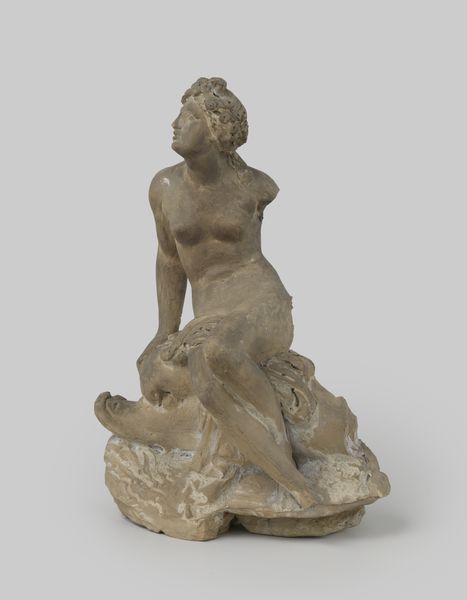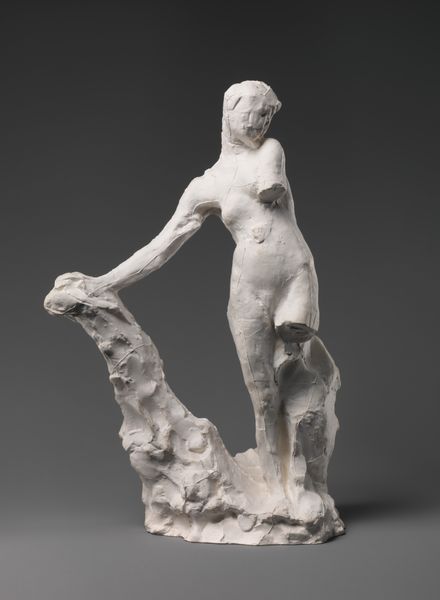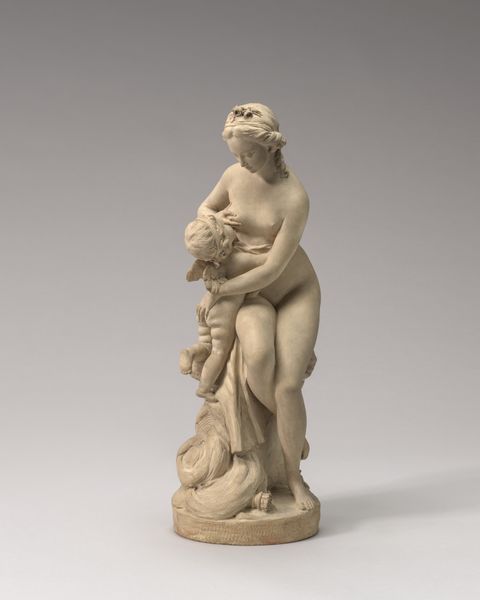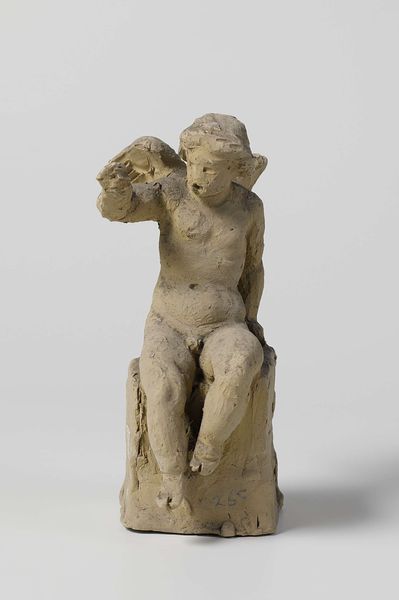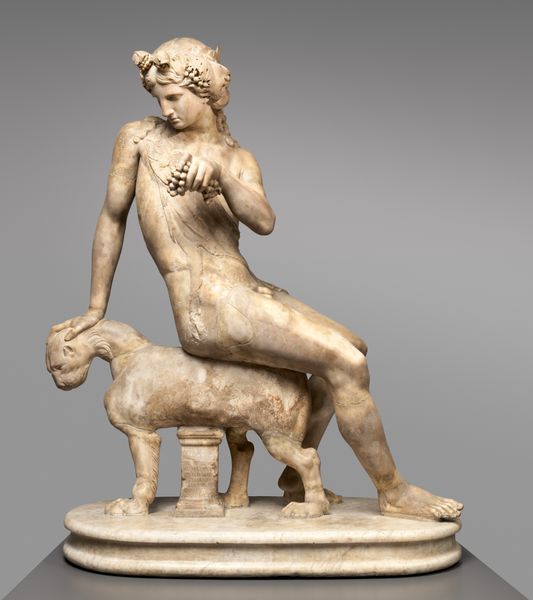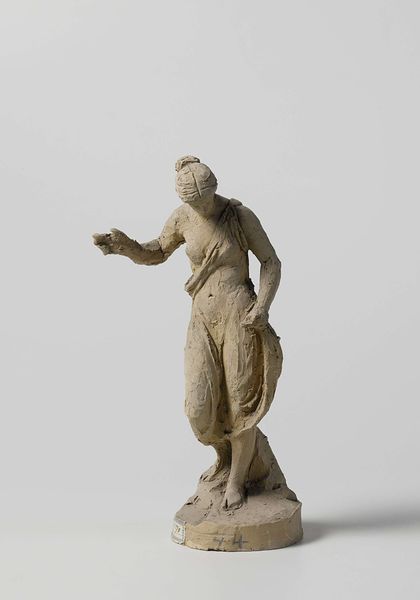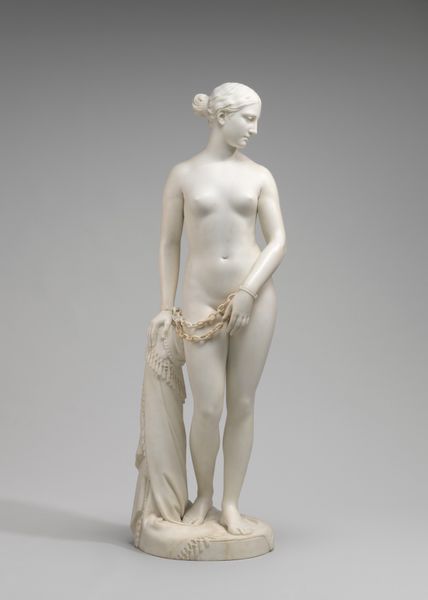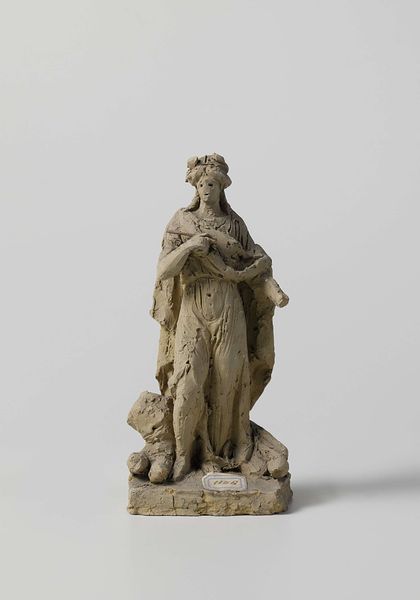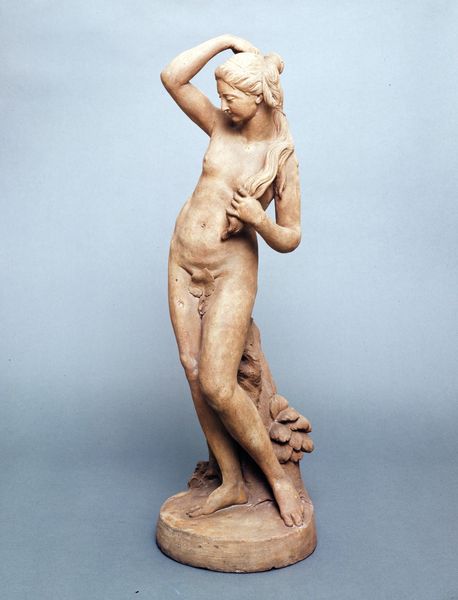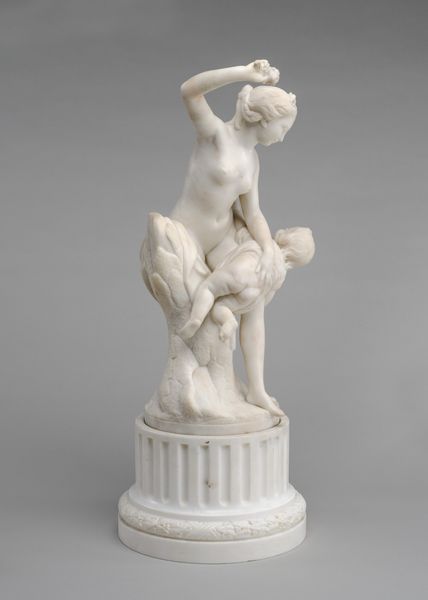
carving, sculpture, plaster
#
portrait
#
carving
#
landscape
#
classical-realism
#
sculptural image
#
figuration
#
sculpture
#
plaster
#
academic-art
#
realism
Dimensions: height 1.7 cm, width 1.2 cm, depth 2.1 cm
Copyright: Rijks Museum: Open Domain
Editor: Here we have "Part of Woman with Dog," a plaster sculpture made sometime between 1800 and 1950 by Eugène Lacomblé. It's striking how vulnerable the figure seems, partially unfinished and even broken. How do we contextualize such a work? Curator: Indeed. The figure’s incompleteness, both physically and perhaps metaphorically, invites critical questions about idealized femininity in that period. Notice how the woman is posed, almost demure, but also how the sculpture, even damaged, suggests a classical ideal. How might this sculpture both perpetuate and challenge the societal expectations of women in the 19th century? Editor: I see what you mean. The dog seems to be looking up to her for guidance, but I also can’t ignore the broken fragment at the bottom, almost like she’s also lost a part of herself. Curator: Exactly! The broken element allows us to interpret the work through the lens of contemporary feminist theory, examining themes of fragmentation and the pressures exerted on female identity through art history. Could this suggest a disruption of the patriarchal narrative and reclaim space to represent female stories authentically? Editor: So, this isn’t just a simple depiction, but an exploration, maybe even a subversion, of societal expectations through the material itself. I had initially focused on the visual elements. Curator: The artist’s choice of medium also factors in the sculpture's ability to spark such thought-provoking questions about women in society. After all, how could the meaning shift with, say, a bronze casting, in contrast with more modest materials such as plaster? Editor: I hadn’t considered that, but it certainly would. Thank you. It’s given me a fresh perspective. Curator: My pleasure! Now we both might consider what dialogue the woman is seeking and if its societal resonance persists into the present moment.
Comments
No comments
Be the first to comment and join the conversation on the ultimate creative platform.

